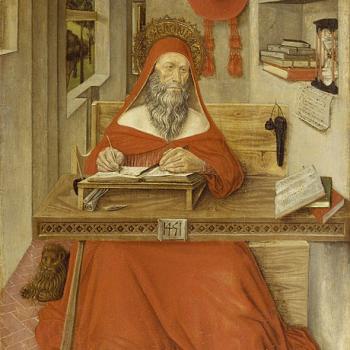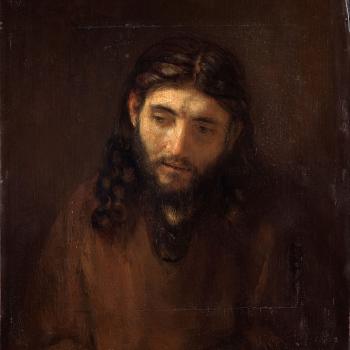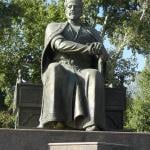Chronology of Harmonious Data from History, Archaeology, the Bible, and Astronomy

For background and complete argumentation and documentation, see my previous articles:
December 25th Birth of Jesus?: Interesting Considerations [12-11-17]
Star of Bethlehem, Astronomy, Wise Men, & Josephus (Amazing Astronomically Verified Data in Relation to the Journey of the Wise Men & Jesus’ Birth & Infancy) [12-14-20]
I am drawing the present summary entirely from those two articles.
*****
I. Herod the Great
1) It is commonly accepted by historians (see, e.g., Encyclopaedia Britannica) that he died in 4 BC. But a significant and respectable minority of historians make some serious arguments that need to be grappled with, suggesting a date of 1 BC or 1 AD for his death:
a) Historians have primarily replied on the Jewish historian Josephus (37 – c. 100) to calculate this “death date “of 4 BC: particularly a chronology developed by Protestant theologian and historian Emil Schürer in his 1891 book, A History of the Jewish People in the Time of Jesus Christ.
i) Josephus stated (Antiquities 17.6.4) that a lunar eclipse was observed right before Herod’s death. This is usually ascribed to an eclipse dated March 13, 4 BC. But it’s been observed that this was very late, and a minor partial eclipse. There was another much more visible lunar eclipse on 29 December, 1 BC (just three days before “AD” begins).
ii) Josephus (Antiquities 17.9.3, The Jewish War 2.1.3) also noted that Herod died between a “fast” (probably Yom Kippur) and the Jewish Passover. These are our two big historical clues. The eclipse 29 December, 1 BC is a plausible (though not proven) candidate, all things considered.
iii) But there are also ongoing scholarly disputes about the manuscripts of Josephus. Twenty-seven texts of Antiquities from before 1544 indicate that Herod died later than usually supposed: in 1 BC or maybe 1 AD.
iv) This would “move” the date of Jesus’ birth to 3 or 2 BC: which is the most common date stated by many early Church fathers, such as Irenaeus of Lyons, Clement of Alexandria, Tertullian, Hippolytus of Rome, Eusebius of Caesarea, and Origen.
b) Another argument that can be made is the date of coins issued by Herod the Great’s successors. The evidence shows that none can be dated before 1 AD. These coins were controlled by Rome and only after Herod the Great’s death could such coins be issued.
II. Date and Month of Jesus’ Birth
1) Historians estimate the birth of Jesus based on when Herod the Great died: placing it within the two previous years (based on deductions from the story of his killing the infants of Bethlehem two years and younger). As explained above, the most accepted date for Herod’s death is 4 BC. But there is strong evidence suggesting his death, rather in 1 BC or 1 AD. I provisionally accept this, as I try to synthesize all of the available data in many fields.
2) Conception and Birth of John the Baptist: Zechariah was a priest from the class of Abijah (Lk 1:5). These classes served for a week in the temple, two times a year (see 1 Chr 24:10; cf. 24:1-19). German Catholic theologian Josef Heinrich Friedlieb (1810-1900) documented that Zechariah’s class would have been serving in the temple in the second week of the Jewish month Tishri (late September). While thus serving, the Archangel Gabriel revealed to Zechariah that his wife Elizabeth was to bear a son (Lk 1:5-24). That means that John the Baptist was conceived in September (in the year 4 BC: in the timeline I am proposing). This would mean that the day of John’s birth came at the end of June, 3 BC. The Church celebrates the Nativity of St. John the Baptist on June 24th.
3) Luke informs us of how the angel Gabriel told the Blessed Virgin Mary that Elizabeth was six months pregnant (Lk 1:36), which means that the Annunciation occurred at or around March 25th (again, the date that the Church celebrates that great occasion). Nine months from this date is December 25th, which the Church celebrates as the date of Christ’s birth; and it is reasonable to believe (based on the Bible and historical data), that this was indeed the actual date of His birth.
4) It’s commonly believed (I have thought this myself in the past) that Christians made the date of Christmas to correspond to Roman holiday of Saturnalia, so as to — in effect — wipe it out, by “baptizing” it. But Saturnalia occurred between December 17 and 23, as a celebration of the winter solstice.
5) Another such proposed candidate is Sol Invictus (“Birthday of the Unconquered Sun”). The problem with that is that earliest date provided by historical evidence for Sol Invictus is 25 December 274 (institution by the Roman emperor Aurelian of this birthday on December 25th). It was only in the 12th century that it was first suggested that the date of Christmas was deliberately determined to be the same as pagan feasts. This was a side-note in the writings of the Syriac bishop Dionysius bar-Salibi.
6) We have records, on the other hand, of Christian celebrations of Christmas on December 25th, from Pope St. Telesphorus (c. 125-136), the seventh bishop of Rome, St. Theophilus (AD 115-181), bishop of Caesarea, St. Hippolytus (170-240), Pope Liberius (352-66), St. Gregory Nazianzus (d. 389), and St. Ambrose (d. 397).
7) Evidence of the Church Christianizing pagan festivals can be found as early as 601 AD (letter of Pope St. Gregory the Great). But what we don’t see is any proof of this practice in the second and third centuries, when Christians were already celebrating Christmas on December 25th. Skeptical scholars of the 18th and 19th centuries falsely projected these notions back to the earlier Church: wrongly supposing that it had no idea when Christ was born, and so arbitrarily adopted December 25th, because of Roman celebrations. As we have seen above: this is totally incorrect.
III. Dates for Proposed Star[s] of Bethlehem: Followed by the Wise Men Seeking Jesus
1) There was a triple conjunction of Jupiter (“the king planet”), with the quadruple star system star Regulus (“the king star”), the brightest object in the constellation Leo , starting in September, 3 BC.
2) Jupiter was in a very close conjunction with Venus on 17 June, 2 BC: so close they may have even overlapped. It would have looked to the naked eye like one very bright star: about as close as any conjunction can be.
3) This spectacular conjunction would have (plausibly) enticed the Magi to journey to Jerusalem, partially because it would have appeared in the west, precisely in that direction. Other relevant factors are the symbolism of the constellations, and celestial bodies, which were given names such as those alluded to in #1 above. Leo also represented the lion, which was the symbol of tribe of Judah as well. There is much more along those lines that caused the Magi to conclude that an extraordinary king was to be born in Israel.
4) The Magi would have needed at least two months, but probably three or four, to journey to Jerusalem from Persia (probably the most likely starting-point) on camels, given how fast they can walk with a load through the desert. This particular proposed scenario would give them a “window” period of six months, to see the extraordinary conjunction of 17 June, 2 BC in their homeland and also the “star of Bethlehem” when they arrived in Israel (see #6 below).
5) On 26-27 August in 2 BC, Jupiter and Mars were in very close conjunction, and Venus and Mercury were also close by.
6) In December, 2 BC (possibly on December 25th), the wise men arrived and visited Jesus in Bethlehem, when He was (by the calculations described above) about a year old (patristic consensus held that He was a toddler during their visit: not a newborn baby). Jupiter was right above Bethlehem then: viewed from Jerusalem, at 68 degrees above the horizon, and the brightest object in the sky at that time and place. This was during its paused apparent retrograde motion. Some observers of the astronomical data think it came to a virtual “stop” (i.e., as observed by us on earth) in December, 2 BC, for six days. It’s believed from the astronomical data that Jupiter began “moving” again after 25 December, 2 BC. That fits into the notion of the star of Bethlehem guiding the wise men. Since they found Jesus on or before December 25th, they no longer needed to be guided by what they believed was a “sign” or “guide” for them. See much more on the Magi in the first part of my recent article.
7) In 2 BC, the feast of Hanukkah began on December 23rd. It’s a gift-giving feast. The wise men would have observed the entire Jewish nation in a happy holiday spirit. If they saw Jesus on the 25th, they would have presented gifts to him on the third day of the festival.
IV. Complete Chronology: Briefly Outlined
1) September, 4 BC: conception of John the Baptist. [historical determination of Zechariah’s time serving in the temple, from theologian Josef Heinrich Friedlieb, combined with Lk 1:5-24]
2) c. March 25, 3 BC: conception of Jesus Christ / Annunciation. [deduction based on #1 and the Bible saying that Jesus was six months younger than John: Lk 1:26, with early Church agreement]
3) c. June 24th, 3 BC: birth of John the Baptist. [deduction from #1 and #2, with early Church agreement]
4) September, 3 BC: triple conjunction of Jupiter and Regulus. [astronomical data]
5) c. December 25th, 3 BC: birth of Jesus. [deduction from #1 and #2, with early Church agreement]
6) 17 June, 2 BC: Jupiter was in a very close and spectacularly bright and striking conjunction with Venus, leading, plausibly, to the wise men — for reasons given above — deciding to journey from Persia to Jerusalem: a journey likely to take 4-6 months. [astronomical data and deduction from biblical data on the wise men seeing “the star” both in Persia and again specifically in Jerusalem and Bethlehem, when they arrived months later, to visit and worship a non-newborn Jesus]
7) 26-27 August, 2 BC: Jupiter and Mars were in very close conjunction, and Venus and Mercury were also close by, thus further leading the wise men on to the west and Jerusalem. [astronomical data and extrapolation from biblical texts regarding their journey and arrival]
8) 23 December, 2 BC: Hannukah begins in Israel. [historical research]
9) December, 2 BC (possibly on December 25th): the wise men arrived and visited Jesus in Bethlehem, after talking to Herod in Jerusalem, when Jesus was about a year old. Jupiter was right above Bethlehem then: viewed from Jerusalem, at 68 degrees above the horizon, and the brightest object in the sky at that time and place (Mt 2:9). This was during its paused apparent retrograde motion. It began “moving” again after 25 December. [astronomical & biblical data, and plausible extrapolation of known historical facts, with biblical & early Church corroboration of a non-newborn Jesus visited by the wise men, guided by the star]
10) 1 BC or 1 AD: Herod the Great died. [historical and archaeological data, from Josephus, who mentions a lunar eclipse (corroborated from astronomy), and the time based on Jewish feasts; also, based on early Josephus manuscript evidence, and Roman coinage]
11) c. 125-136 AD: first known Christian celebration of Christmas on December 25th, during the reign of Pope St. Telesphorus. [historical evidence]
12) 25 December 274 AD: Sol Invictus is instituted by the Roman emperor Aurelian, 138-149 years after Christians are documented to have celebrated Christmas on December 25th. [historical evidence]
13) 601 AD: First evidence of the Church “Christianizing” pagan festivals: in a letter of Pope St. Gregory the Great. [historical evidence]
14) 12th century AD: first suggestion that the date of Christmas was deliberately determined to be the same as pagan feasts: in a marginal note in the writings of the Syriac bishop Dionysius bar-Salibi. [historical evidence]
15) 18th-19th centuries AD: skeptical / hyper-critical scholars of the 18th and 19th century falsely projected these notions back to the earlier Church: wrongly supposing that it had no idea when Christ was born, and so arbitrarily adopted December 25th, because of Roman celebrations. [incompetent interpretations of historical evidence]
***
For many more articles on Christmas and Advent, see my Christmas web page.
***
Photo credit: The Nativity (1523), by Lorenzo Lotto (1480-) [public domain / Wikimedia Commons]
***













